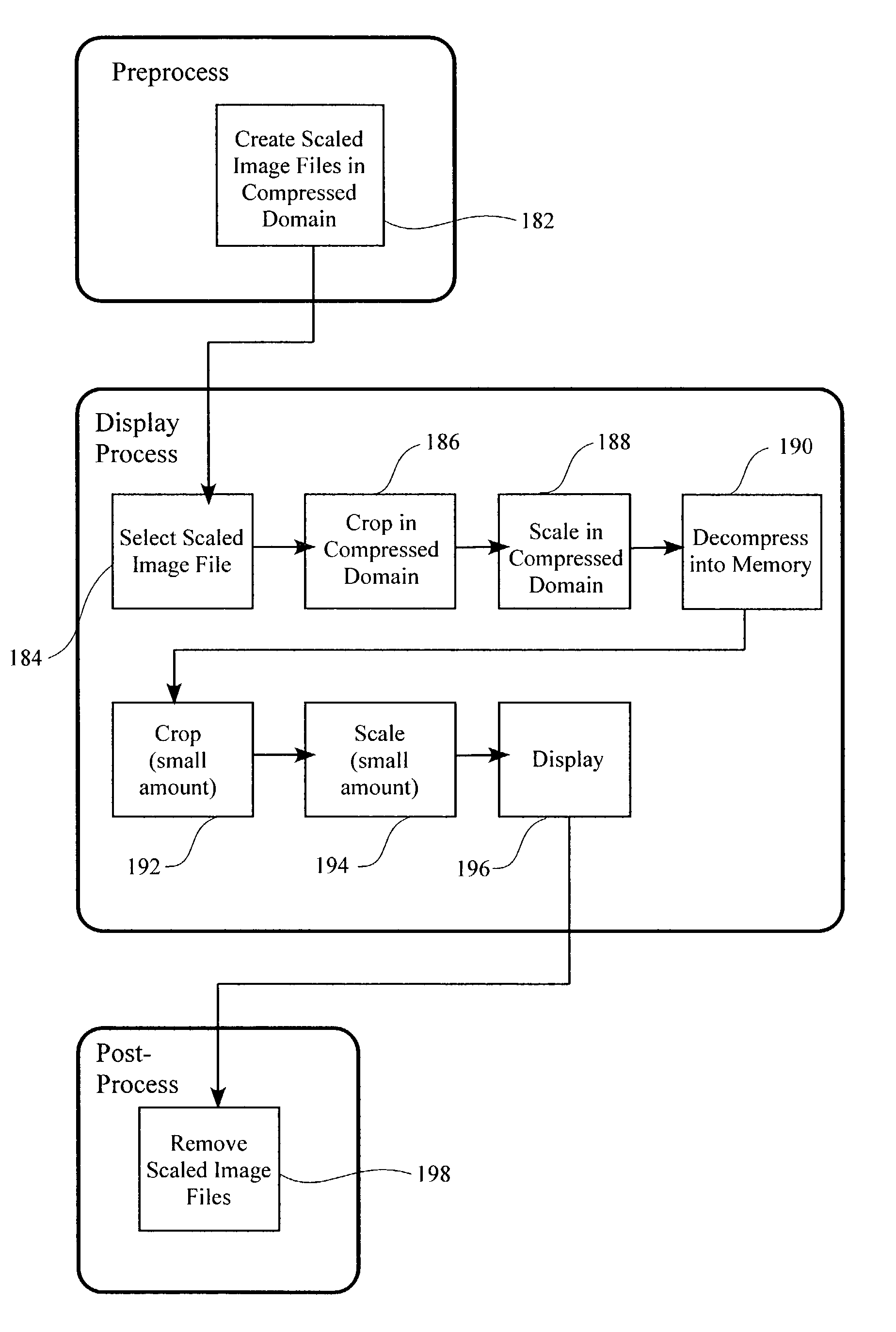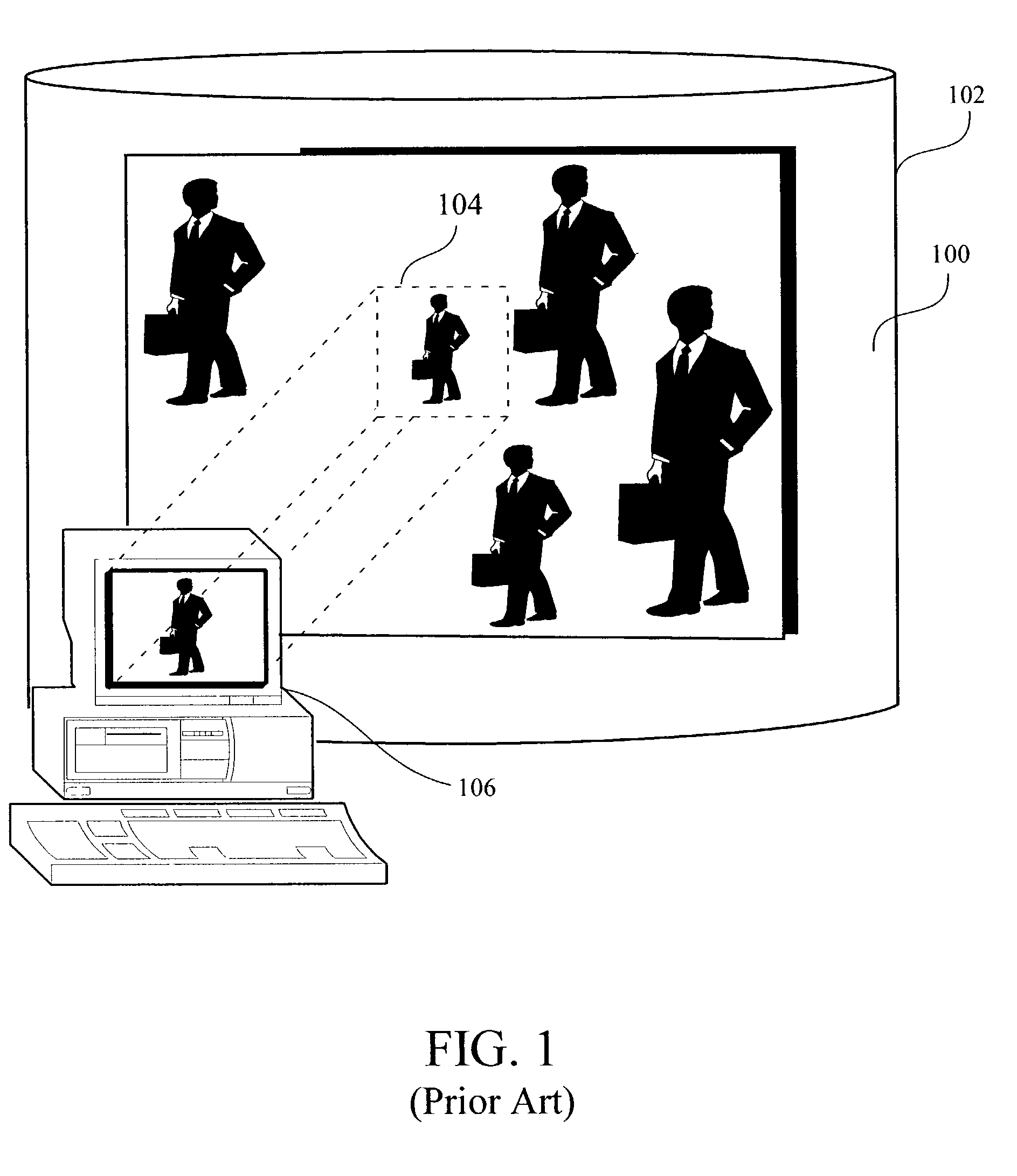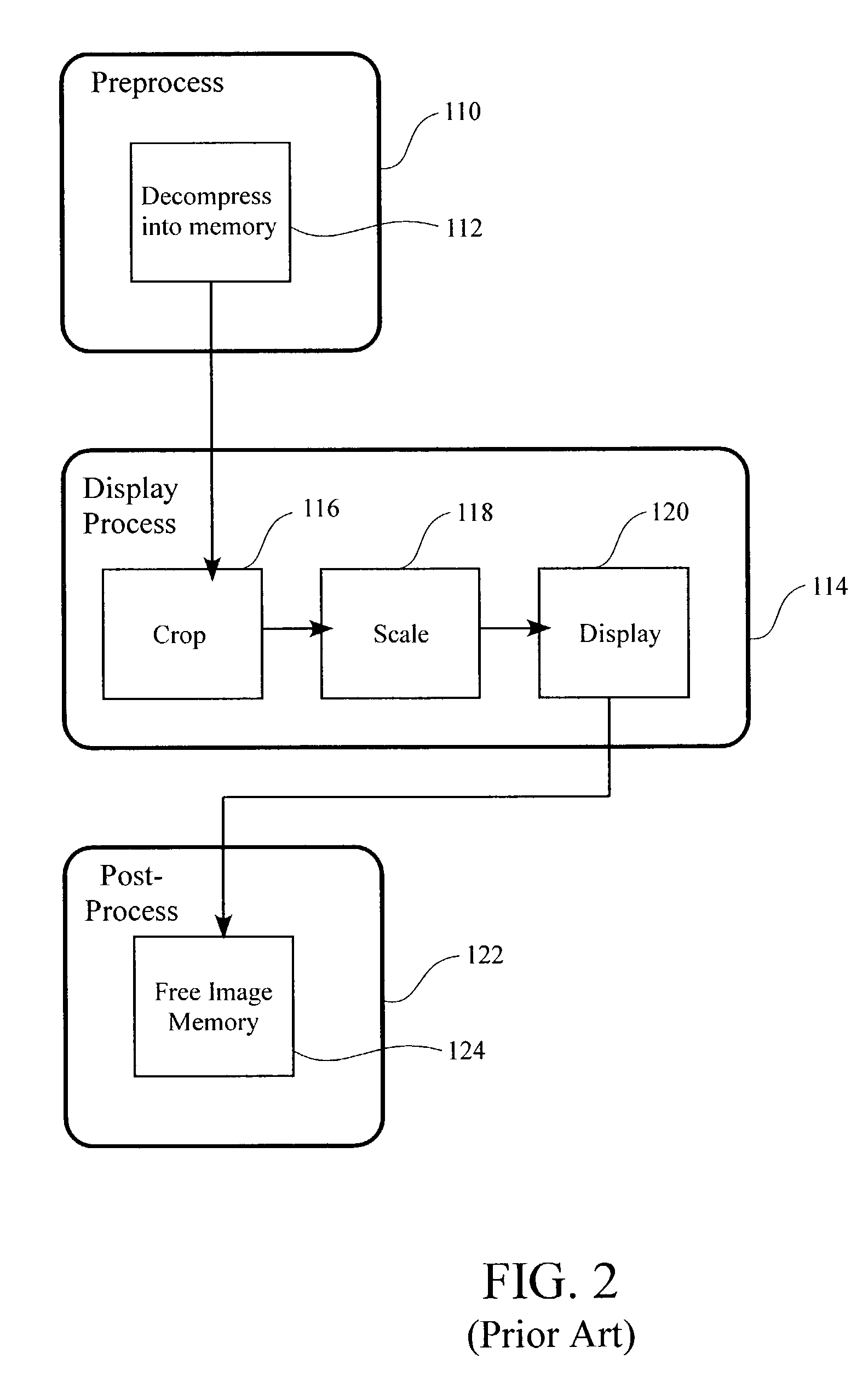Method and apparatus for displaying arbitrarily magnified high resolution images using compressed domain processing
a compressed domain and high resolution technology, applied in the field of image display systems, can solve the problems of excessive virtual memory swapping, image may be too large to be displayed, painstakingly slow display, etc., and achieve the effect of efficient processing image data, maximum functionality, and enabling
- Summary
- Abstract
- Description
- Claims
- Application Information
AI Technical Summary
Benefits of technology
Problems solved by technology
Method used
Image
Examples
Embodiment Construction
[0028]An invention is described for an apparatus and method for reducing the demands on memory and disk space for displaying high resolution images. It will be obvious, however, to one skilled in the art, that the present invention may be practiced without some or all of these specific details. In other instances, well known process operations have not been described in detail in order not to unnecessarily obscure the present invention. FIGS. 1 and 2 are described in the “Background of the Invention” section.
[0029]The embodiments of the present invention provide a method and apparatus for allowing a large high resolution image to be efficiently displayed on a small low resolution display. As used herein, a large image refers to an image that is greater than about 30 megabytes (MB) in a decompressed format. The embodiments described below include methods defining three distinct processing sections, i.e., preprocessing, display processing, and post processing. The display processing s...
PUM
 Login to View More
Login to View More Abstract
Description
Claims
Application Information
 Login to View More
Login to View More - R&D
- Intellectual Property
- Life Sciences
- Materials
- Tech Scout
- Unparalleled Data Quality
- Higher Quality Content
- 60% Fewer Hallucinations
Browse by: Latest US Patents, China's latest patents, Technical Efficacy Thesaurus, Application Domain, Technology Topic, Popular Technical Reports.
© 2025 PatSnap. All rights reserved.Legal|Privacy policy|Modern Slavery Act Transparency Statement|Sitemap|About US| Contact US: help@patsnap.com



